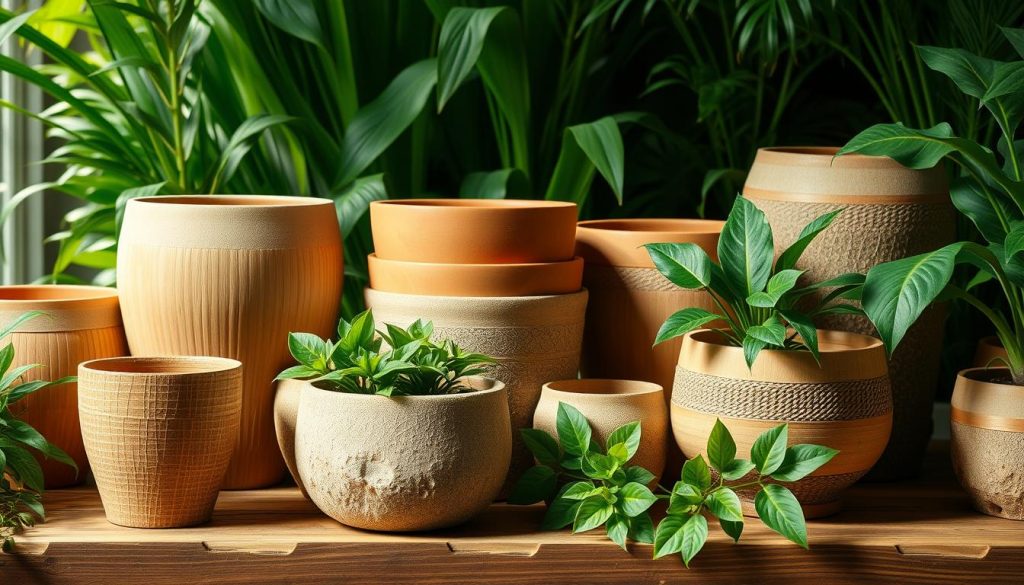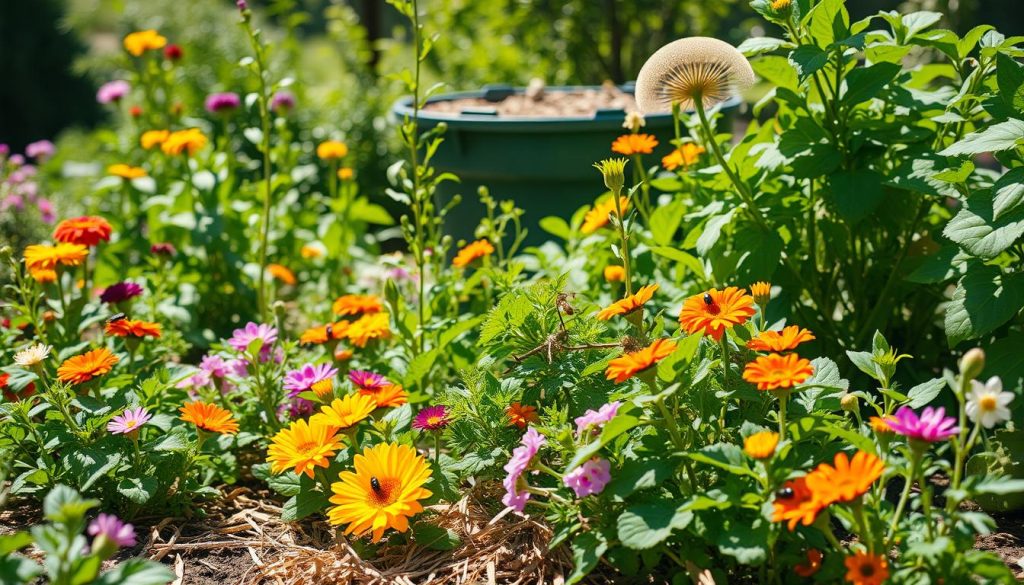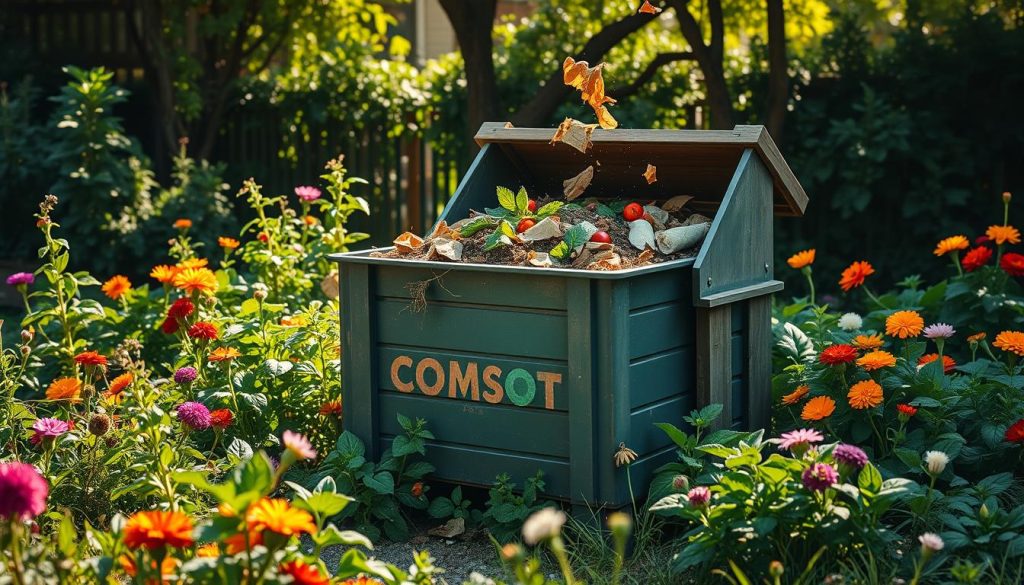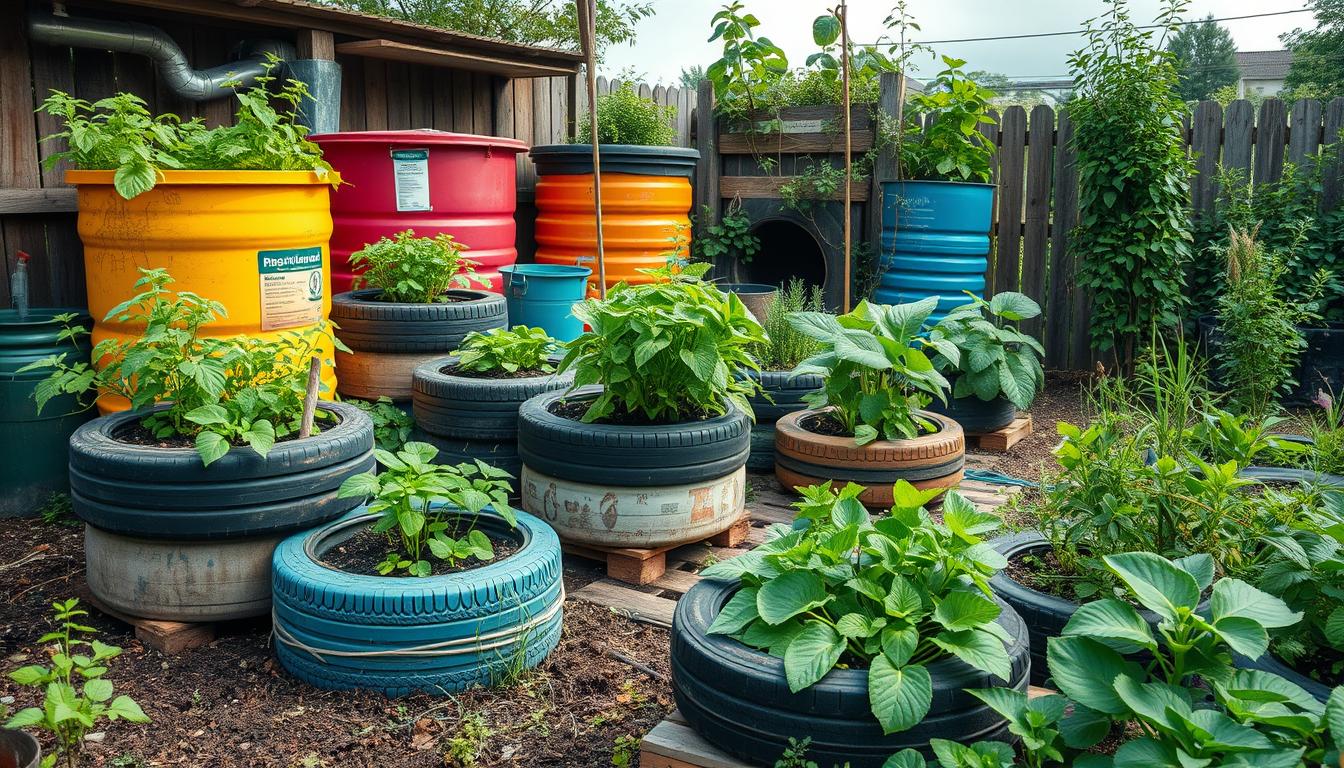I started a journey to make my garden zero-waste. It has changed my garden and helped the environment a lot. I learned many sustainable gardening tips that I’m eager to share.
Understanding the need to reduce waste and use eco-friendly methods was key. This journey has been rewarding.
I faced many challenges on this path. From cutting down on plastic to dealing with kitchen scraps, each one taught me something new. By adopting sustainable gardening, I made my garden better for the environment and for my community.
In the next parts, I’ll talk about each challenge and the tips I found. These tips helped me overcome these hurdles.
Understanding the Concept of Zero-Waste Gardening
As I started gardening, I saw how key it is to cut down on waste and use eco-friendly methods. Zero-waste gardening is all about making gardening better for our planet. It helps us use less and make our gardens more sustainable.
Zero-waste gardening means we think about what we use and what we throw away. It’s about using less, reusing what we can, and recycling. This way, we protect our planet, cut down on harmful gases, and make our gardens better for all living things.
What Is Zero-Waste Gardening?
Zero-waste gardening uses natural stuff like compost to feed plants. It also means catching rainwater and using it wisely. Plus, it’s about making planters from recycled things like old pallets.
Importance of Sustainability in Gardening
Sustainability is key in gardening because it makes our gardening better for the planet. By using eco-friendly ways, we save resources, cut down waste, and help more plants and animals live together. The good things about sustainable gardening include:
- Less water used
- Less chemical use
- More variety of life
- Healthier soil
Challenge 1: Reducing Plastic Use in My Garden
Starting my zero-waste gardening journey, I quickly saw the need to cut down on plastic. Finding non-plastic alternatives to pots was a big challenge. I looked into sustainable gardening and found compostable materials to be very beneficial.
Organic garden waste management is key to lessening plastic waste. Composting food and yard waste makes a rich soil for my plants. This method cuts down on plastic and makes a waste-free cycle.
Innovative Alternatives to Plastic Pots
Here are some cool alternatives to plastic pots:
- Biodegradable pots from coconut coir or bamboo
- Recycled paper pots that go straight into the soil
- Wooden planters that last for years

Compostable Materials I Discovered
I found many compostable materials for gardening, like coffee grounds, eggshells, and leaf mold. These not only cut down waste but also feed my plants. Using these materials, I’ve made a garden that’s healthy and eco-friendly.
Challenge 2: Managing Kitchen Scraps
As I went on my zero-waste gardening journey, I learned how key managing kitchen scraps is. I found ways to use leftovers and turn them into garden gold. Composting became a big part of this, helping me cut down on waste and make rich soil.
Creative Ways to Use Food Leftovers
Coming up with new uses for leftovers was a big challenge. I made a list of all my scraps and looked for ways to reuse them. I used veggie peels for broth, made jam from fruit scraps, and even used coffee grounds as fertilizer.
How I Turned Scraps into Fertilizer
To make fertilizer from scraps, I started composting. I built a compost bin from recycled stuff and mixed in food scraps and dried leaves. I also used compost tea to feed my plants. This cut down my waste and made my garden healthier.
Some perks of composting in the garden include:
- Less waste in landfills
- Soil full of nutrients
- Better soil structure and fertility
Challenge 3: Dealing with Pests Naturally
As I went on my zero-waste gardening journey, I faced a big challenge: dealing with pests naturally. I didn’t want to use chemical pesticides because they harm the environment and soil. Instead, I chose waste-free garden solutions to keep my garden healthy.
I started by using natural pest control methods. I introduced beneficial insects and used physical barriers to keep pests away. I also learned about companion planting, where some plants help others by keeping pests away and improving growth.
Effective Natural Pest Control Methods
- Introduce beneficial insects, such as ladybugs and lacewings, to control pest populations
- Use physical barriers, such as fine mesh or fine netting, to prevent pests from reaching plants
- Practice companion planting to deter pests and improve plant growth
My Experience with Companion Planting
Companion planting has been a game-changer for me. It’s a simple way to keep my garden healthy and balanced. By choosing the right plants together, I reduce the need for harmful chemicals. This makes my gardening more sustainable.
Companion planting also helps my soil and attracts good insects. By using waste-free garden solutions, I’ve created a garden that’s good for me and the planet.

Challenge 4: Sourcing Seeds Sustainably
As I went on my zero-waste gardening journey, I learned how key it is to get seeds in a green way. I started using eco-friendly garden practices like picking heirloom seeds. These seeds are good for the planet and cut down on waste.
Heirloom seeds can be saved and replanted, so you don’t need new seeds every year. This saves money and helps the environment.
I found that local seed swaps were a fantastic way to get these seeds. By swapping seeds with other gardeners, I cut down on packaging and shipping. It also helped me meet others who care about the planet as much as I do.
The Benefits of Heirloom Seeds
Heirloom seeds have many advantages, including:
- Improved flavor and nutrition
- Increased biodiversity
- Reduced reliance on industrial agriculture
- Cost-effective, as seeds can be saved and replanted
How Local Seed Swaps Helped Me
Local seed swaps gave me sustainable seeds and helped me feel part of a community. We shared knowledge and resources. This created a network of people working together to reduce waste and promote green gardening.
Challenge 5: Water Conservation Techniques
As I went on my zero-waste gardening journey, I learned how crucial water conservation is. Using smart ways to save water helps the planet and cuts down my water costs. A big part of this is managing organic garden waste through composting. This makes the soil rich in nutrients.
Implementing Rainwater Harvesting
Rainwater harvesting is a simple yet powerful way to save water. By catching and storing rainwater, I can water my plants without using city water. This method also cuts down on stormwater runoff, which can pollute nearby waterways. I set up a rainwater collection system, which includes a roof catchment, gutter, and downspout.
My Experience with Mulching
Mulching is another way I save water. By adding a layer of organic mulch, like wood chips or straw, I keep the soil moist. This means I don’t have to water as often. Mulching also keeps weeds down, so I don’t need to use harmful chemicals. Some benefits of mulching include:
- Reduced soil erosion
- Improved soil structure
- Increased crop yields

Challenge 6: Creating a Closed Loop System
To make my garden a closed loop system, I started composting. I collected food scraps and yard waste. Then, I used them to make nutrient-rich soil. This way, I reduced my environmental impact and made my garden more sustainable.
Composting and Its Benefits
Composting is key in zero-waste gardening. It cuts down waste, makes soil rich in nutrients, and helps plants grow well. Some good things about composting are:
- Reduced greenhouse gas emissions
- Conserved water
- Supported local wildlife
Impact of a Closed Loop System
My garden’s health and sustainability improved a lot with a closed loop system. Using waste-free garden solutions made my garden more self-sufficient. This reduced my environmental footprint and saved money on gardening supplies.
By using zero-waste planting methods and waste-free garden solutions, gardeners can make their gardens more sustainable. This can be done by composting, harvesting rainwater, and cutting down on plastic use.
Reflecting on My Zero-Waste Gardening Journey
Looking back, I feel proud and grateful for my zero-waste gardening journey. It has taught me a lot about living sustainably. I’ve faced many challenges, but they’ve made me a better gardener.
Lessons Learned Along the Way
Adaptability is key, I’ve learned. Trying new things and being open to change has helped me improve. Even small actions, like using old containers or finding new ways to fight pests, make a big difference.
Encouraging Others to Embrace Zero-Waste Practices
My journey has shown me that we all can help make the world better. By sharing what I’ve learned, I want to encourage others to start their own zero-waste gardens. Together, we can reduce waste and grow healthier gardens.

